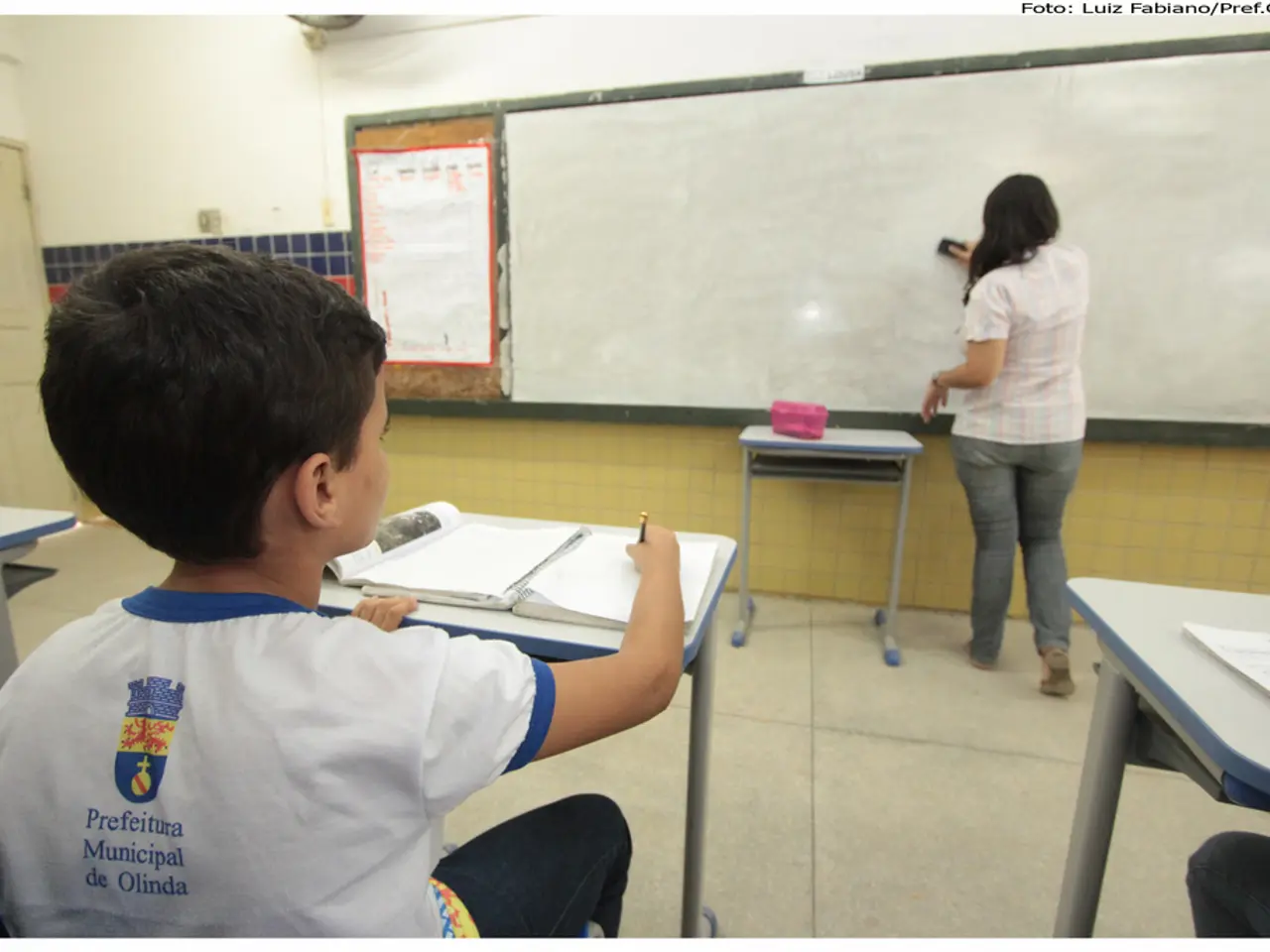Tale of Chalk Dust: A Contemporary Mythological Narrative
In a small, unassuming town, a young girl harbored a dream of becoming a teacher. Fueled by her love for learning, she worked diligently to polish her skills and prepare for the day she would step into the classroom.
One day, an unsmiling old woman extended an offer to the young girl. The school she was offering was unlike any the young teacher had ever seen; the children were dull and uninterested in learning. Undeterred, the young teacher accepted the challenge, eager to inspire a love for learning in the children.
Upon taking over the classroom, the young teacher worked tirelessly to make it a magical place for the children. She filled it with artwork, music, dancing, reading, and outdoor activities, creating an environment that was a stark contrast to the sterile, drab space it once was.
However, the old head teacher was unimpressed with the young teacher's efforts. She believed that good was no longer good enough and that the young teacher must teach the children to be perfect in every way. The young teacher, feeling the weight of these expectations, started to cheat on the children's test scores, working all night to ensure perfect results.
The children, who had never experienced such high expectations, were horrified when the young teacher shouted at them for the first time. They worked hard to please the young teacher, but could not improve their test results significantly. The young teacher, realizing the error of her ways, stopped cheating and began to focus on fostering curiosity and interactive learning instead.
The young teacher and the kind caretaker worked together to improve the classroom, painting it in bright colors, fixing the leaking ceiling, and purchasing new books. The children, who had once been passive recipients of information, began to take on active roles in their learning. They started to ask questions, engage in discussions, and even take the lead in their own learning.
The impact of this mindset shift was profound. The children moved from passive recipients of information to active problem-solvers who set ambitious goals and persisted through challenges with a sense of purpose. The school, once dull and uninspiring, became a hub of engaged, curious learners.
The moral of the story about the young teacher who transformed a dull school is that education thrives when teachers adopt new mindsets of agency, creativity, and partnership with students, moving away from mere control and rote teaching to fostering curiosity, purpose, and interactive learning. This kind of transformation requires unlearning old habits, embracing flexibility, and seeing teaching as guiding and co-learning rather than controlling.
In the end, the old head teacher snorted and vanished after speaking to the young teacher. The young girl, who had once felt despair, realized that she had not only transformed the school but had also found a place where she could realize her dream of becoming a teacher.
[1] Transformative Teaching: A New Mindset for a New Era
[2] The Power of a Positive Classroom: How to Create Joyful, Engaging Learning Spaces
[3] From Surviving to Thriving in the Classroom: Strategies for Transformative Teaching
[4] The Role of the Teacher in a Student-Centered Learning Environment
[1] Transformative Teaching: A New Mindset for a New Era emphasizes the importance of adopting a creative and interactive approach to learning, using elements like music, games, and personal growth to build a dynamic classroom environment.
[2] The Power of a Positive Classroom: How to Create Joyful, Engaging Learning Spaces proposes innovative ways to transform traditional classrooms into spaces that foster a love for learning, including weather-themed activities, educational-and-self-development materials, and a focus on personal growth.
[3] From Surviving to Thriving in the Classroom: Strategies for Transformative Teaching offers practical strategies for teachers to facilitate a shift from rigid, rote learning to interactive, student-centered learning, drawing on learning experiences that incorporate games, music, and outdoor activities.
[4] The Role of the Teacher in a Student-Centered Learning Environment discusses the transformation of the teacher's role from a traditional authority figure to a guide and collaborator who fosters curiosity and a love for learning, utilizing tools such as games, music, educational resources, and personal development materials.




